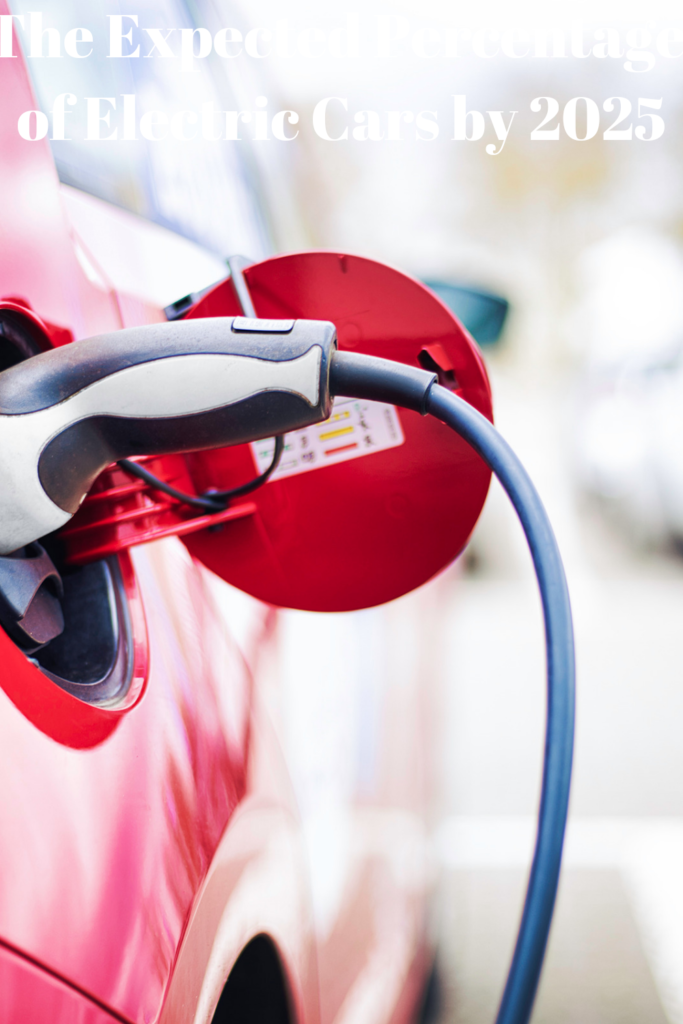Title The Expected Percentage of Electric Cars by 2025: A Comprehensive Analysis of Industry Trends and Market Forces
The global automotive industry is undergoing a significant shift towards electric vehicles (EVs) as governments, consumers, and manufacturers recognize the environmental and economic benefits of transitioning away from conventional gasoline-powered vehicles.

This analysis aims to provide a detailed examination of the projected percentage of cars that will be electric by 2025, taking into account current industry reports, market trends, and expert predictions.
It will emphasize the impact of government policies, advancements in technology, and changing consumer attitudes towards EVs.
Statistical data, case studies, and success stories from various regions will be utilized to support the analysis and present a comprehensive understanding of the global shift towards EVs.
I. Government Policies and Support:
Governments worldwide have enacted policies and regulations to promote the adoption of EVs. These initiatives include subsidies, tax incentives, and strict emissions standards.
- Subsidies and Tax Incentives: Many countries, such as Norway, China, and the Netherlands, offer substantial financial incentives to encourage consumers to purchase EVs. These incentives range from purchase subsidies, reduced taxes on EV sales, and exemptions from road tolls. Such measures have proved successful in increasing EV market share.
- Emission Standards: Government-imposed emission standards, particularly in regions like the European Union, aim to penalize manufacturers who do not meet strict carbon dioxide (CO2) emission targets. This move has motivated automakers to invest heavily in electric vehicle development and production.
II. Advancements in Technology:
The rapid advancement of EV technology has significantly contributed to the proliferation of electric cars.

These advancements have led to increased battery efficiency, improved charging infrastructure, and reduced costs.
- Battery Technology: The development of high-capacity batteries, such as lithium-ion, has enabled EVs to achieve longer ranges on a single charge, addressing one of the key concerns of potential buyers. Additionally, ongoing research into solid-state batteries and other battery technologies could lead to further performance enhancements in EVs.
- Charging Infrastructure: The expansion of charging networks plays a crucial role in easing range anxiety and enhancing the convenience of owning an EV. Investments in public, workplace, and home charging stations are increasing, facilitating the wider adoption of electric cars.
III. Changing Consumer Attitudes:
Consumer attitudes towards electric vehicles have evolved significantly in recent years due to increased awareness of environmental concerns, rising fuel costs, and improved vehicle options.
- Environmental Consciousness: Consumers are increasingly concerned about reducing their carbon footprint, driving the demand for cleaner and more sustainable transportation options. EVs offer a viable solution, with zero tailpipe emissions and less reliance on fossil fuels.
- Economic Benefits: Electric vehicles provide long-term cost savings due to lower fuel and maintenance costs. As battery prices continue to decline, EV prices are becoming more competitive with traditional combustion engine vehicles. Consumers are recognizing the economic benefits of EV ownership.
Case Study: Norway:
Norway serves as a remarkable case study for the expected adoption rate of electric cars. In 2020, EVs accounted for a staggering 75% of new car sales, primarily due to a combination of strong government incentives, extensive charging infrastructure, and a favorable public attitude towards EVs.

IV. Global Market Projections:
Numerous industry reports and expert predictions offer insights into the expected percentage of electric cars by 2025:
- Bloomberg New Energy Finance (BNEF): According to BNEF, EVs are projected to represent 10% of global passenger vehicle sales by 2025, with a significant increase in demand driven by falling battery prices and government regulations.
- International Energy Agency (IEA): The IEA predicts a share of around 30% of new passenger vehicle sales being electric by 2030, with electric car sales expected to reach nearly 60 million annually by 2040.
- McKinsey & Company: McKinsey predicts that EVs could represent almost 20% of global vehicle sales by 2025, assuming supportive government policies, declining battery costs, and the continued expansion of charging infrastructure.
Conclusion:
The expected percentage of cars that will be electric by 2025 varies depending on regional disparities, government policies, technology advancements, and consumer preferences. While precise figures may fluctuate, the global shift towards electric vehicles is inevitable due to the collective efforts of governments, automakers, and consumers.
The projected market share of electric cars in 2025 falls within the range of 10-20%, with an upward trajectory in the subsequent years. Increased adoption of EVs offers the potential for substantial environmental benefits, decreased reliance on fossil fuels, reduced greenhouse gas emissions, and long-term cost savings. However, challenges such as charging infrastructure expansion, battery technology limitations, and consumer education should be addressed to facilitate a smooth transition towards widespread electric vehicle adoption.
